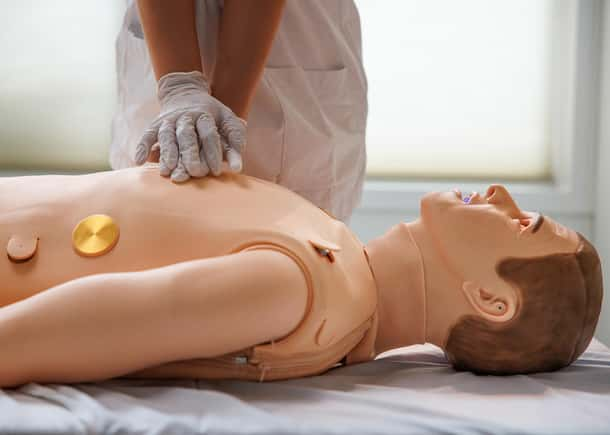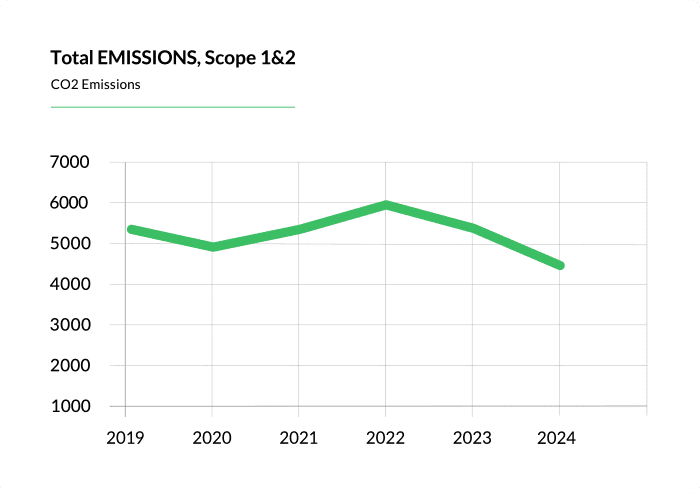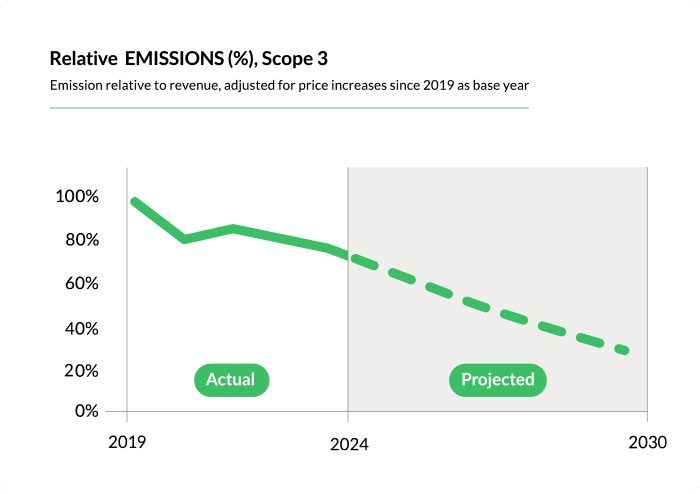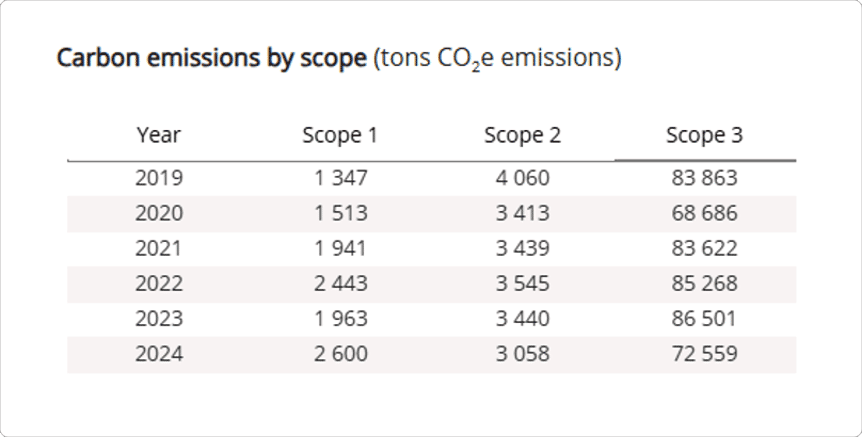Sustainability goals and emissions update
Sustainability


Carbon Emissions
To achieve a 70% reduction in carbon emissions by 2030 across:
And to offset any residual emissions.
Circular Solutions
To adopt circular materials throughout the value chain:
Social Responsibility
To implement UNGP and OECD guidelines throughout our supply chain and cascade to the next level from the largest suppliers.
Within scopes 1 and 2, we see a positive trend from 2019 to 2024. Specifically, from 2022 to 2024, we see a 20% decline each year. While there is no single factor that drives all of our positive results, the accumulated activity across sites is enabling strong performance. Despite this, two specific highlights have created improved performance, and we believe they will drive even larger impacts in 2025.


For scope 3, which accounts for 94% of our total emissions, our goal is measured based on intensity. Here we have decreased by 28% from 2019 to 2024. 16% of this emission reduction came from 2023 to 2024.
Laerdal report emissions at Group level for Scope 1, 2 and 3. Emissions are estimated using a spend based approach. See our Measure to Improve page to read more about our methodology. Scope 1 emissions are negligible and consist of natural gas used in manufacturing processes plus petrol for company cars. Scope 2 emissions consist of emissions related to energy purchased for manufacturing and office locations. The emissions reported for Scope 2 are market based. Scope 3 emissions are the largest emission source at Laerdal Medical. To understand the source of Scope 3 emissions, we divide it into four main categories. Travel represents business travel by company employees. Logistics includes both Upstream and Downstream logistics. Operations represents indirect emissions from operations like purchasing of IT equipment, cleaning services and marketing activities to name a few. The products category represents all raw materials and components that are used in the manufacturing of our products.


Scope 3 emissions from Travel are mostly related to business trips using air travel. For Logistics, we estimate the emissions from transportation from our suppliers to our manufacturing sites, between Laerdal locations and distribution to our end customers. Logistics also includes operations of third-party logistics warehouses. Operations includes purchases of products and services used in the day-to-day running of the company. Facilities, IT & Communication equipment, Marketing activities, external consulting services and assets. Products is the largest Scope 3 category and represents indirect emissions from the purchases of raw materials and components plus products that we purchase from other manufacturers that we sell from our customers.

Products and components are the biggest contributor to our emissions, accounting for 37% of our total emissions. Between 2019 to 2023, the carbon intensity of our products and components has decreased by 18%. During this time, we tested and introduced new environmentally friendly and low CO2 material options for selected products (see our Sustainability Report).
Although the impact is currently small overall, it has been a crucial learning phase. We believe the effect will be significant as we leverage our gained expertise and scale up the use of these sustainable materials across a larger part of our portfolio in the coming years.
